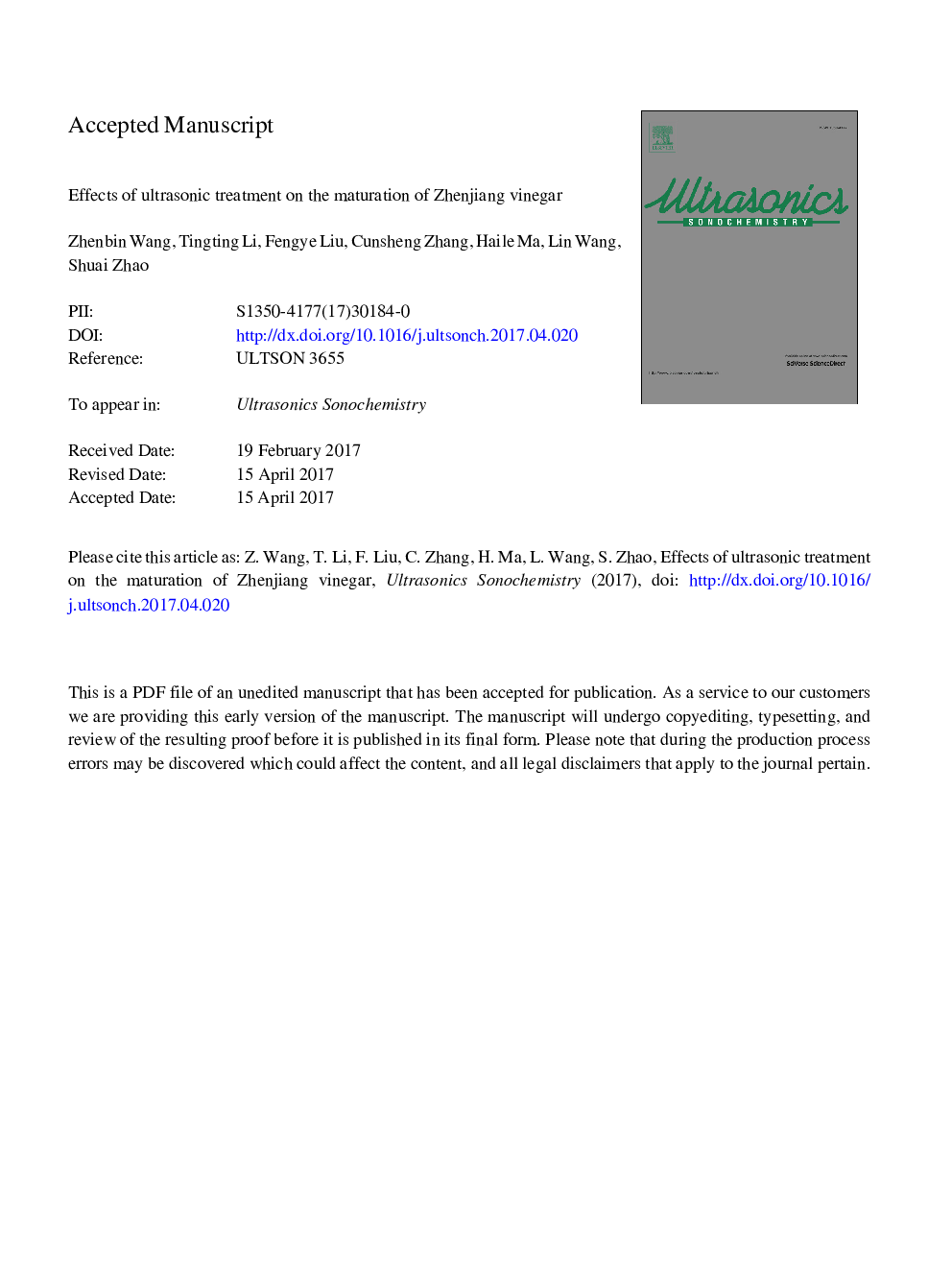| Article ID | Journal | Published Year | Pages | File Type |
|---|---|---|---|---|
| 5144553 | Ultrasonics Sonochemistry | 2017 | 24 Pages |
Abstract
High-quality vinegars are traditionally produced by aging them in barrels or bottles. However, these processes are very time-consuming. To accelerate of Zhenjiang vinegar maturation, the ultrasound was used to treat the steeped vinegar. Results showed that, the optimum ultrasonic power, time and ethanol addition for aging vinegar were determined to be 50Â W/100Â mL, 75Â min and 0.75% (V/V), respectively. Under the optimum experimental conditions, the total amino acid of fresh vinegar decreased from 1082.259Â mg/100Â mL to 871.045Â mg/100Â mL. Several volatile components increased significantly, such as the total esters, aldehydes and heterocyclic. Total non-volatile organic acids increased from 202.59Â mg/10Â mL to 233.87Â mg/10Â mL. The changes of above-mentioned components develop towards the direction of mature vinegar. Coupling the HS-SPME/GC-MS analysis data with Principal Components Analysis, ultrasonic treatment vinegar was determined to be equivalent to 2-3Â years of natural aged Zhenjiang vinegar. This study has showed that ultrasound is promising not only in shortening the aging time and lowering costs for the vinegar-making industry, but also in producing fine vinegar.
Keywords
Related Topics
Physical Sciences and Engineering
Chemistry
Chemistry (General)
Authors
Zhenbin Wang, Tingting Li, Fengye Liu, Cunsheng Zhang, Haile Ma, Lin Wang, Shuai Zhao,
